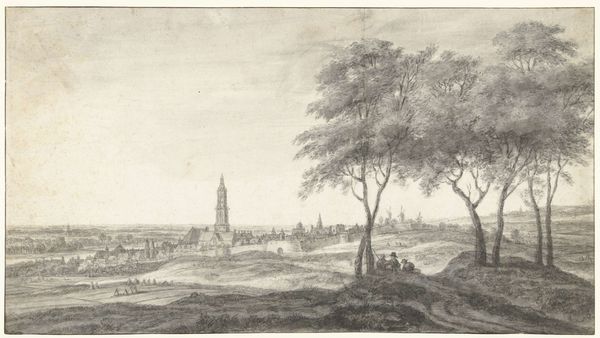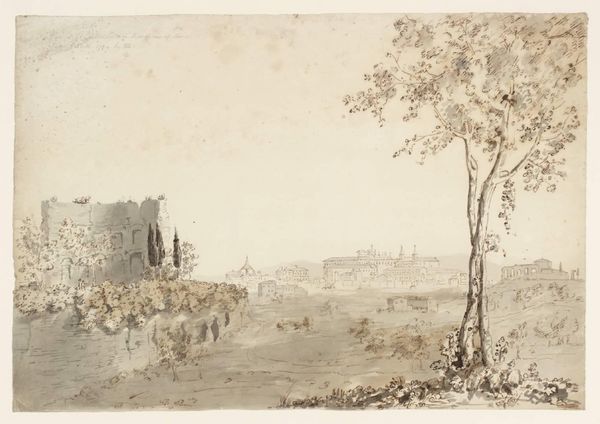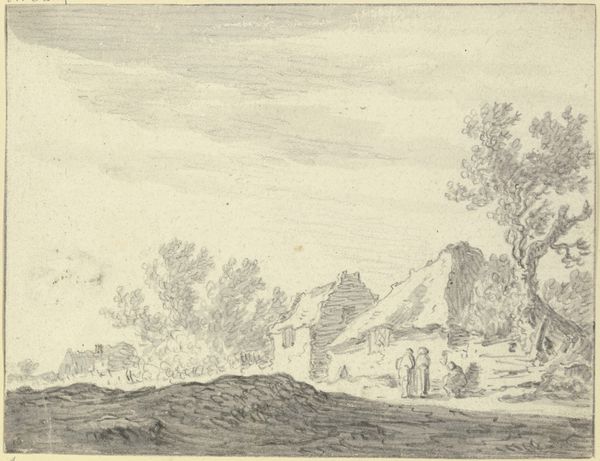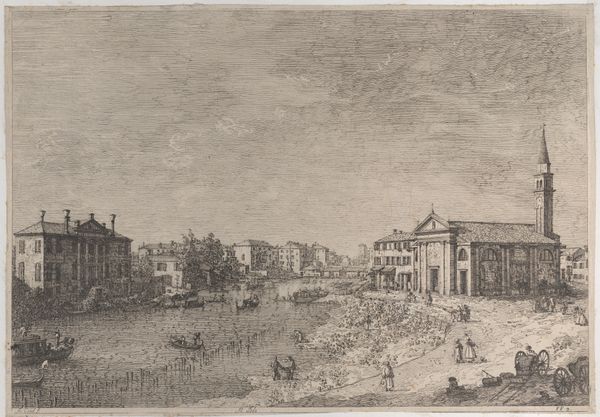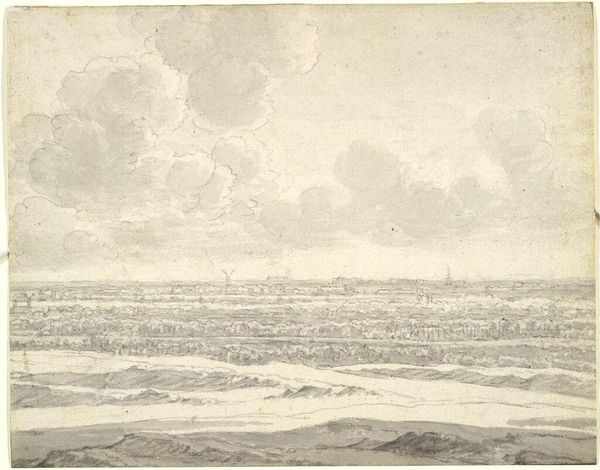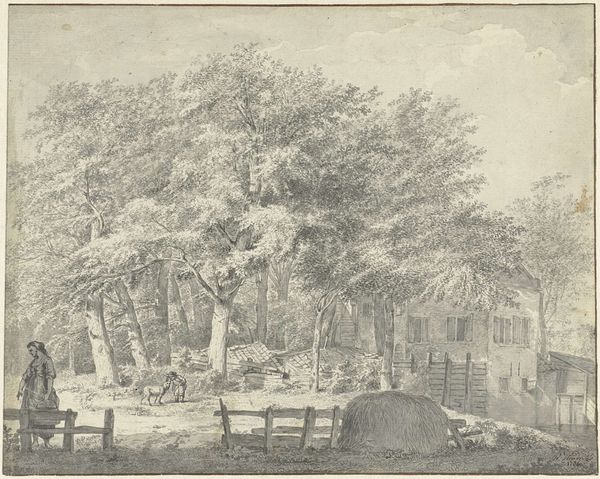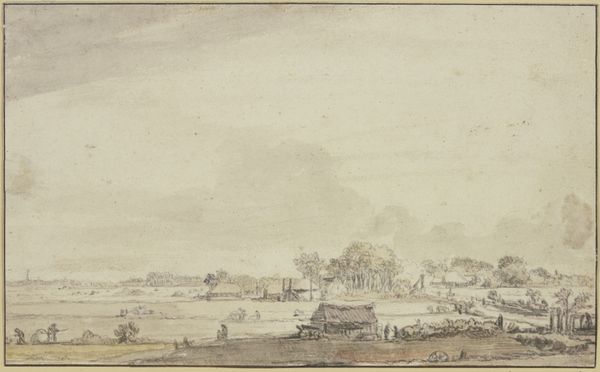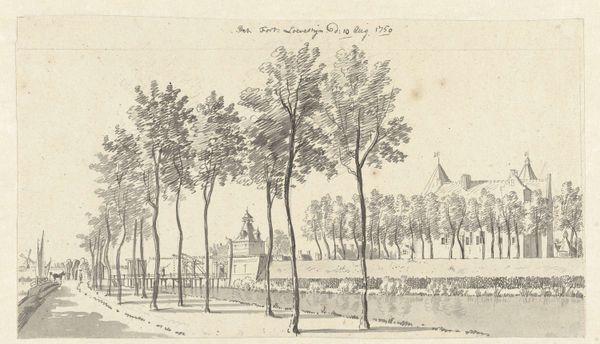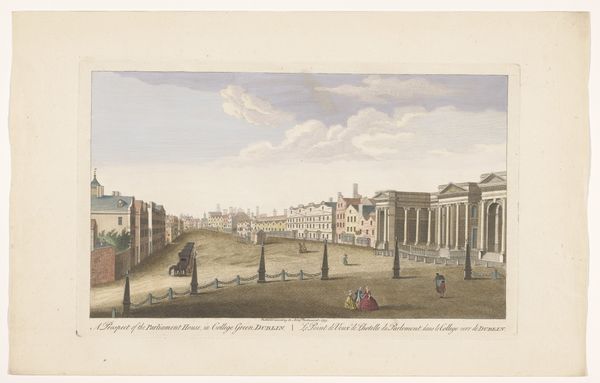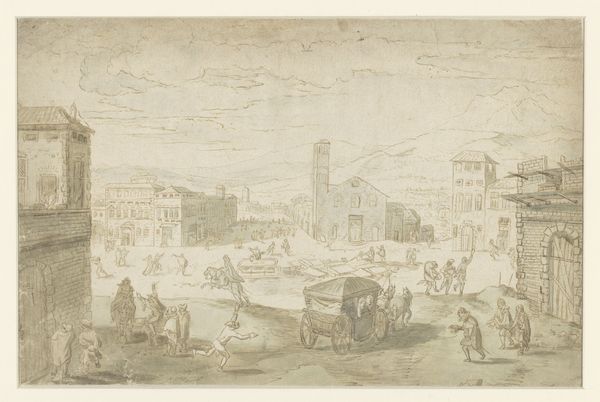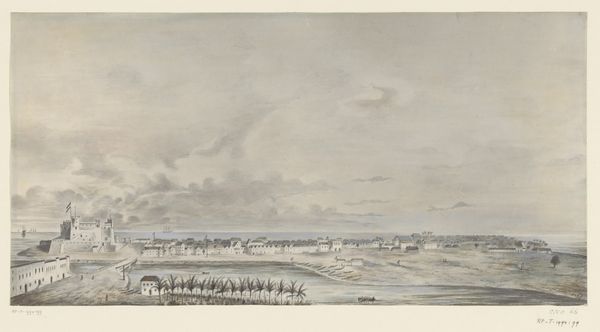
watercolor
#
water colours
#
landscape
#
watercolor
#
coloured pencil
#
genre-painting
#
watercolor
#
realism
Dimensions: height 202 mm, width 428 mm
Copyright: Rijks Museum: Open Domain
Editor: This watercolor by Carel Frederik Reimer, "Begraafplaats met begrafenisstoet in India," from 1773-1775, it seems to capture a slice of life, of a very specific event really, but it is so subdued with muted colors. It’s intriguing and somewhat unsettling. What do you see in this piece? Curator: Well, I see a complex engagement with the material reality of colonial exchange. The use of watercolor and coloured pencil, seemingly delicate, becomes a tool for depicting a scene of death within the context of British expansion in India. Notice the details afforded to the depiction of the people, in comparison to the simplification of landscape. How is this indicative of the production chain during this era? Editor: You're right. There is more detail given to the procession. Are you saying the very materials used, these watercolors and pencils, were tied to the colonial project itself, tools for documenting and understanding for commercial interest or other uses back home? Curator: Exactly. Think about the trade routes that brought these materials to Reimer. How did he obtain paper and pigment in India? The landscape depiction might reflect the Western gaze, perhaps valuing readily exportable images and other materials? Consider too, the labour involved, the local workers perhaps grinding pigments or preparing paper. Editor: That's a perspective I hadn’t fully considered. It’s not just about what's depicted, but also about how the artwork itself was produced and who benefitted from it. Curator: Precisely. The choice of materials, the process of creation, even the market for such images speaks volumes about the social and economic realities of 18th-century India. It shows the intersection between high art and craft and material exchanges. Editor: This makes me think differently about the role of art in history, not just reflecting it, but being a part of the colonial mechanism itself. Thanks for highlighting the often invisible processes of material and artistic production. Curator: It is in this way that art making is always embedded with systems of extraction, exchange, and of course power dynamics. This in itself is a beautiful thing, right?
Comments
No comments
Be the first to comment and join the conversation on the ultimate creative platform.

